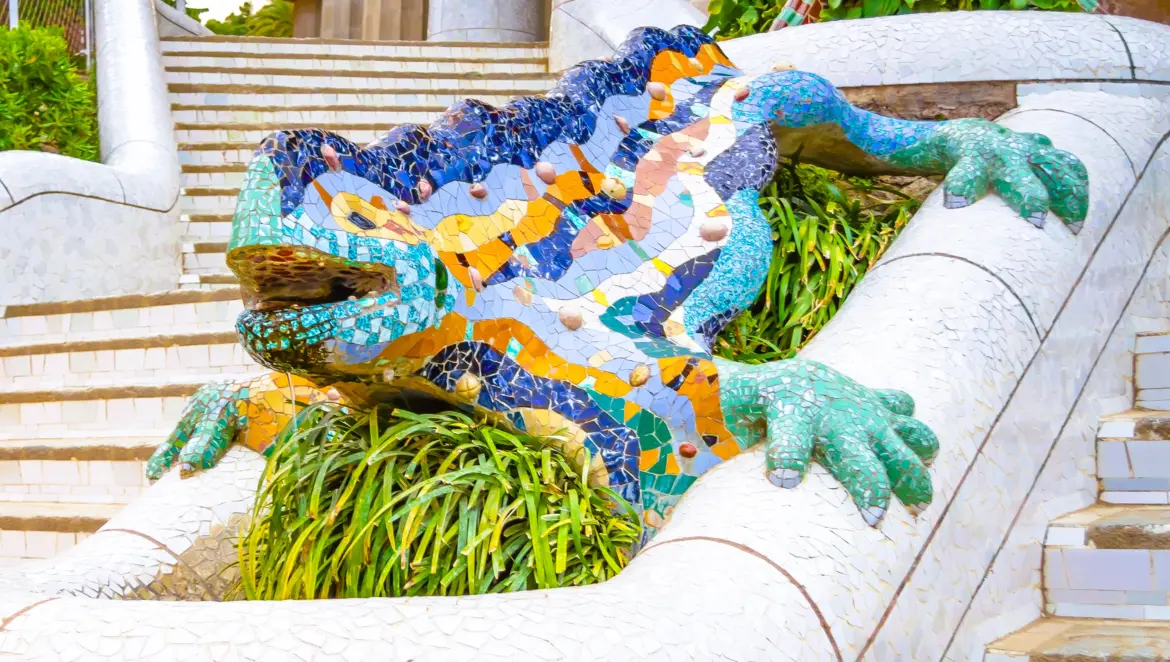Hola, my friends! If you’ve wandered through Park Güell, you’ve already met Barcelona’s most famous guardian – the shimmering mosaic dragon known as El Drac (“the dragon”).But El Drac is only the beginning. Once you start noticing dragons in Barcelona, you’ll see them everywhere – perched on rooftops, carved into fountains, guarding façades, and curling across iron balconies. Some are fierce, others graceful; all of them tell stories about the city’s imagination, resilience, and soul.So, today, we’re following their trail, from legend to limestone, exploring how Barcelona became a city watched over by dragons.
The Legend of Saint George (Sant Jordi)
Every Catalan child grows up with the tale of Sant Jordi, the city’s patron saint. According to legend, a dragon once terrorized a kingdom, devouring animals and villagers until a princess was chosen as its next sacrifice. Just as the beast approached, Saint George rode forth, slayed the dragon, and from its spilled blood grew a single red rose.
In Catalonia, this story blossomed into a tradition of love and literature. On April 23 – La Diada de Sant Jordi (Saint George’s Day) – the streets fill with roses and books, as couples exchange gifts and celebrate creativity conquering fear. The dragon became more than a monster. It became a symbol of challenge and transformation, representing how courage and imagination can triumph over darkness, themes that resonate deeply in Catalan culture and art.
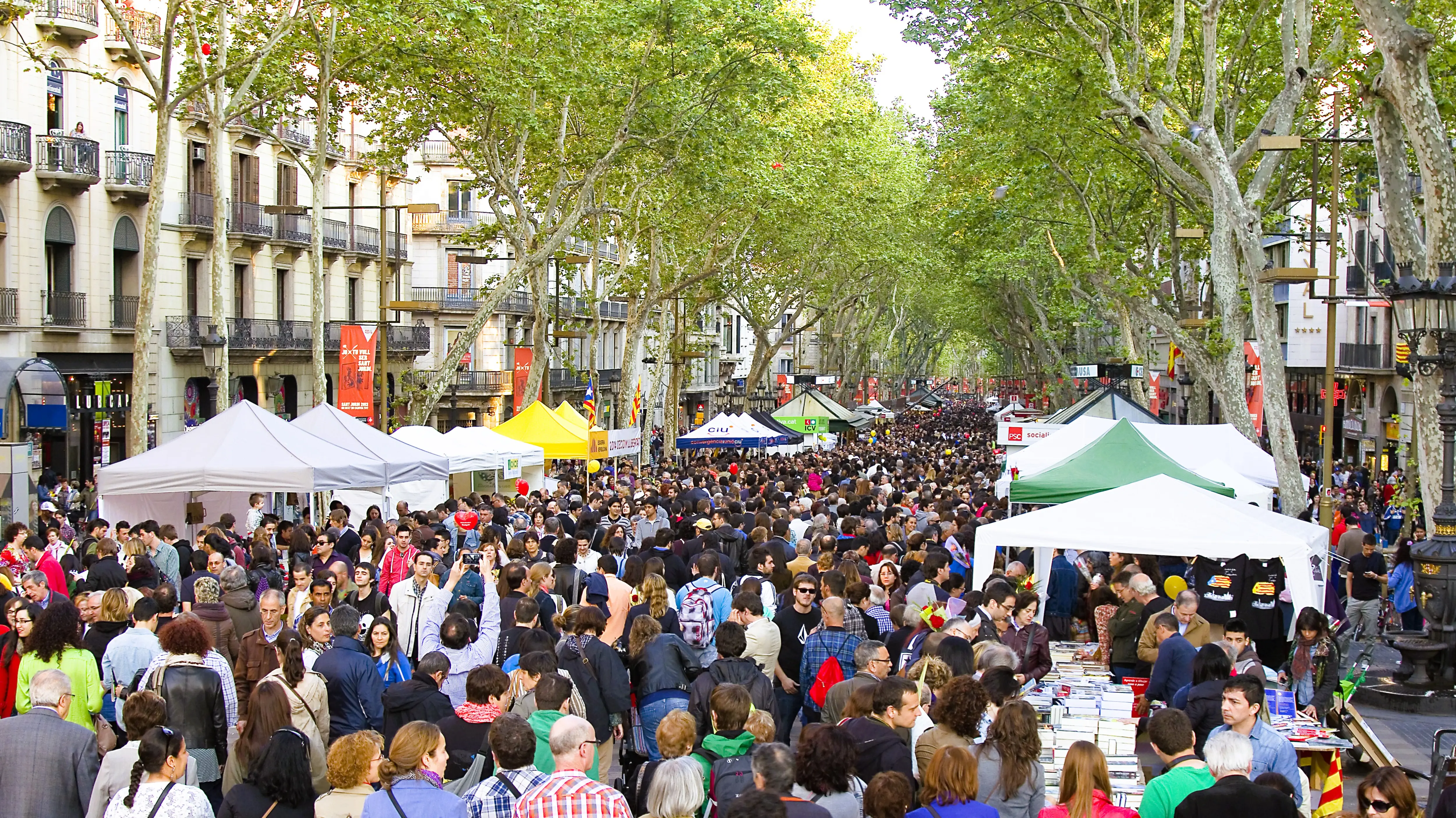
Gaudí’s Dragons: From Stone to Sky
No one captured the spirit of the dragon better than Antoni Gaudí. His architecture brims with mythic creatures, born from faith and nature alike.
El Drac of Park Güell: At the park’s grand staircase, the mosaic dragon fountain greets visitors with a playful snarl. Crafted in trencadís (broken-tile mosaic), it sparkles in sunlight, symbolizing vitality, renewal, and guardianship. Some historians say it represents Ladon, the dragon from Greek mythology who guarded the Garden of the Hesperides – Gaudí often fused Christian and pagan imagery in his work. Others see El Drac as a protector of Catalonia itself. Whatever its meaning, it radiates joy, a guardian not of fear, but of wonder.
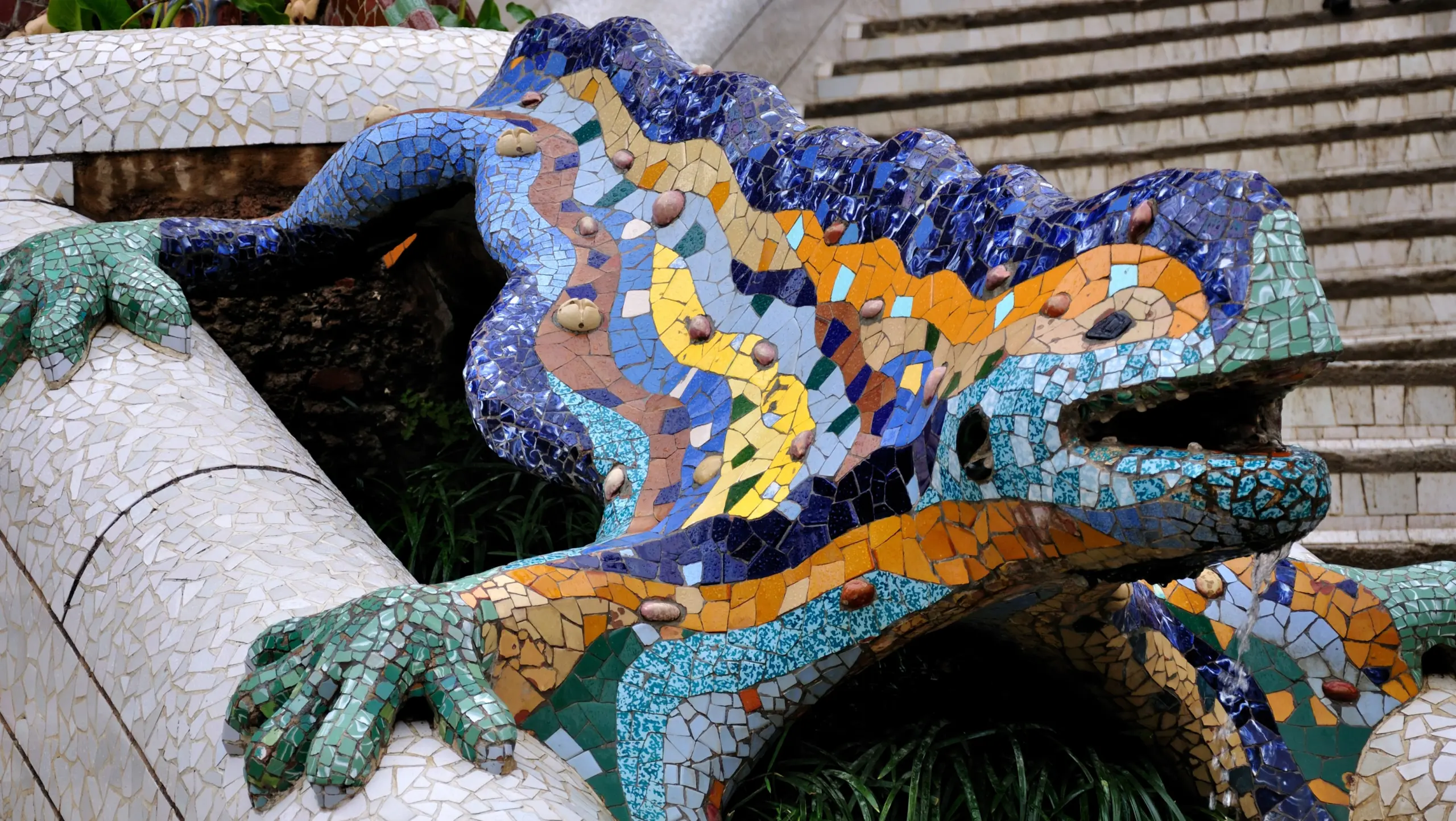
Casa Batlló – The Dragon’s Back: On Passeig de Gràcia, Casa Batlló is a legend come alive. Its rooftop ripples like a dragon’s spine, covered in shimmering scales of blue, green, and violet ceramic tiles. The turret crowned with a cross resembles the sword of Saint George, striking through the beast’s back.By night, when the façade glows softly under golden light, the dragon seems to breathe again – peaceful, subdued, and luminous.
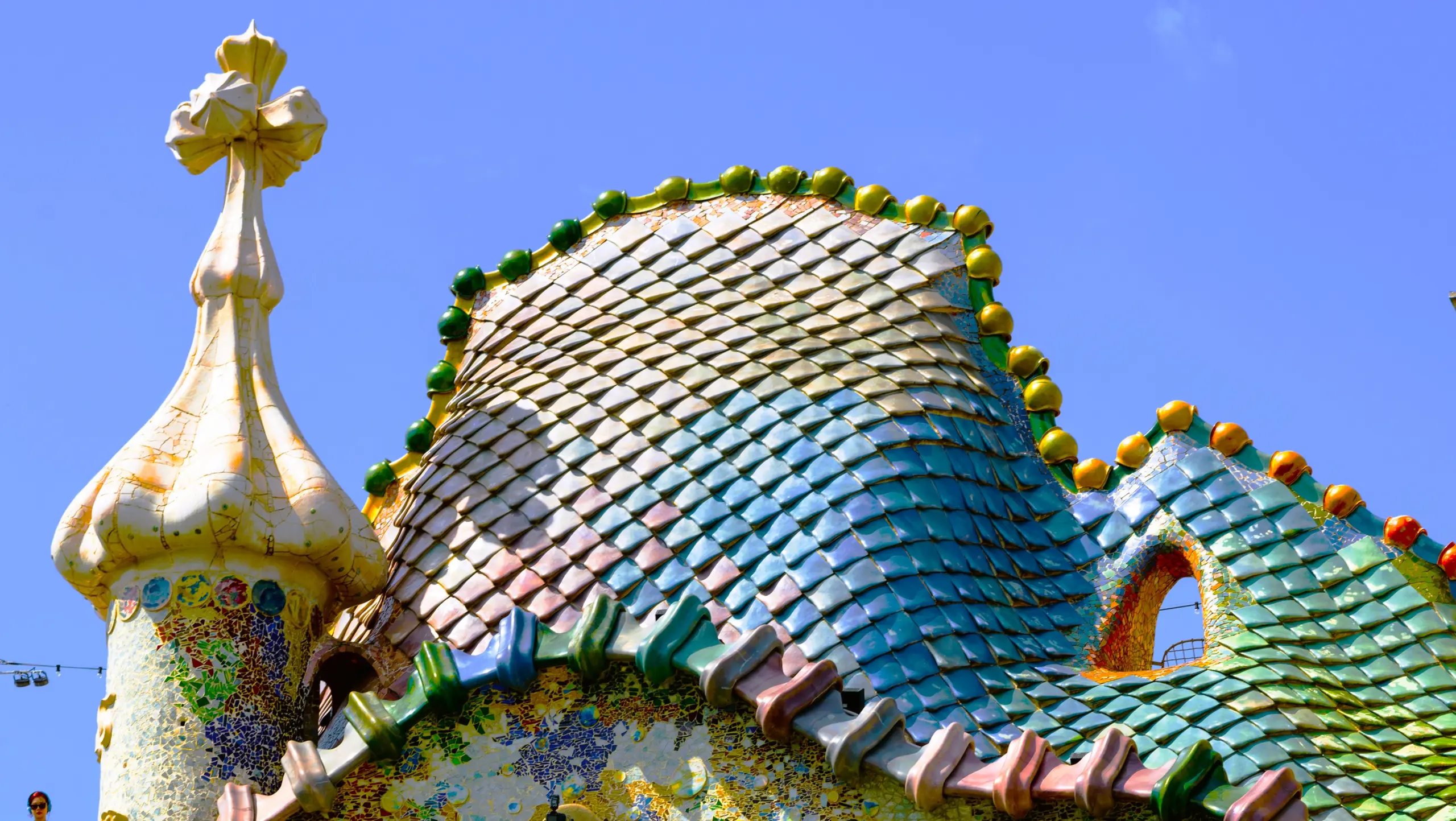
Dragons Beyond Gaudí
Barcelona’s fascination with dragons long predates Catalan Modernism. Wander through the Gothic Quarter or down La Rambla, and you’ll find them quietly watching:
Palau de la Generalitat: If you stand in Plaça de Sant Jaume, near Carrer del Bisbe, and look toward the façade of the Palau de la Generalitat, you’ll spot one of Barcelona’s oldest dragons. Just above the arched entrance, Saint George (Sant Jordi) is carved in elegant Gothic stone, mounted on horseback as he strikes down the dragon beneath him. Created by Pere Joan around 1418, this sculptural group crowns the seat of Catalonia’s government, blending art, faith, and history. From the square, the scene feels almost alive – the saint frozen mid-victory, the dragon twisting below, the marble glowing softly in the Mediterranean light – a timeless reminder that even in the heart of civic life, myth and legend still watch over Barcelona.
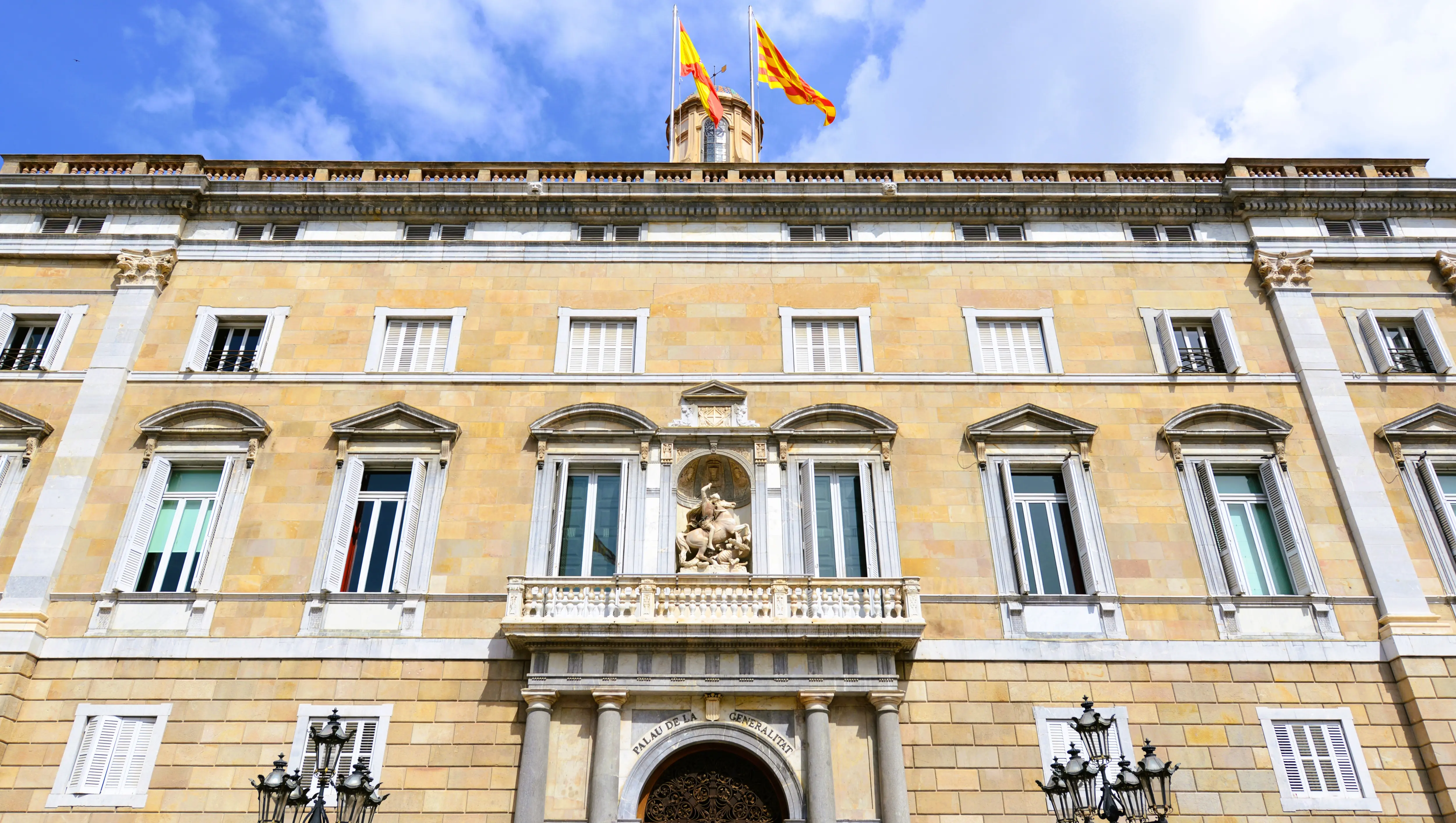
Casa Bruno Cuadros – The Umbrella House: On La Rambla 82, look up. A green oriental-style dragon clings to the corner of the façade, holding an umbrella in one claw and a lantern in the other. Created by Josep Vilaseca i Casanovas in 1883, it merges East Asian art with Catalan Modernism – proof that Barcelona’s imagination knows no borders.
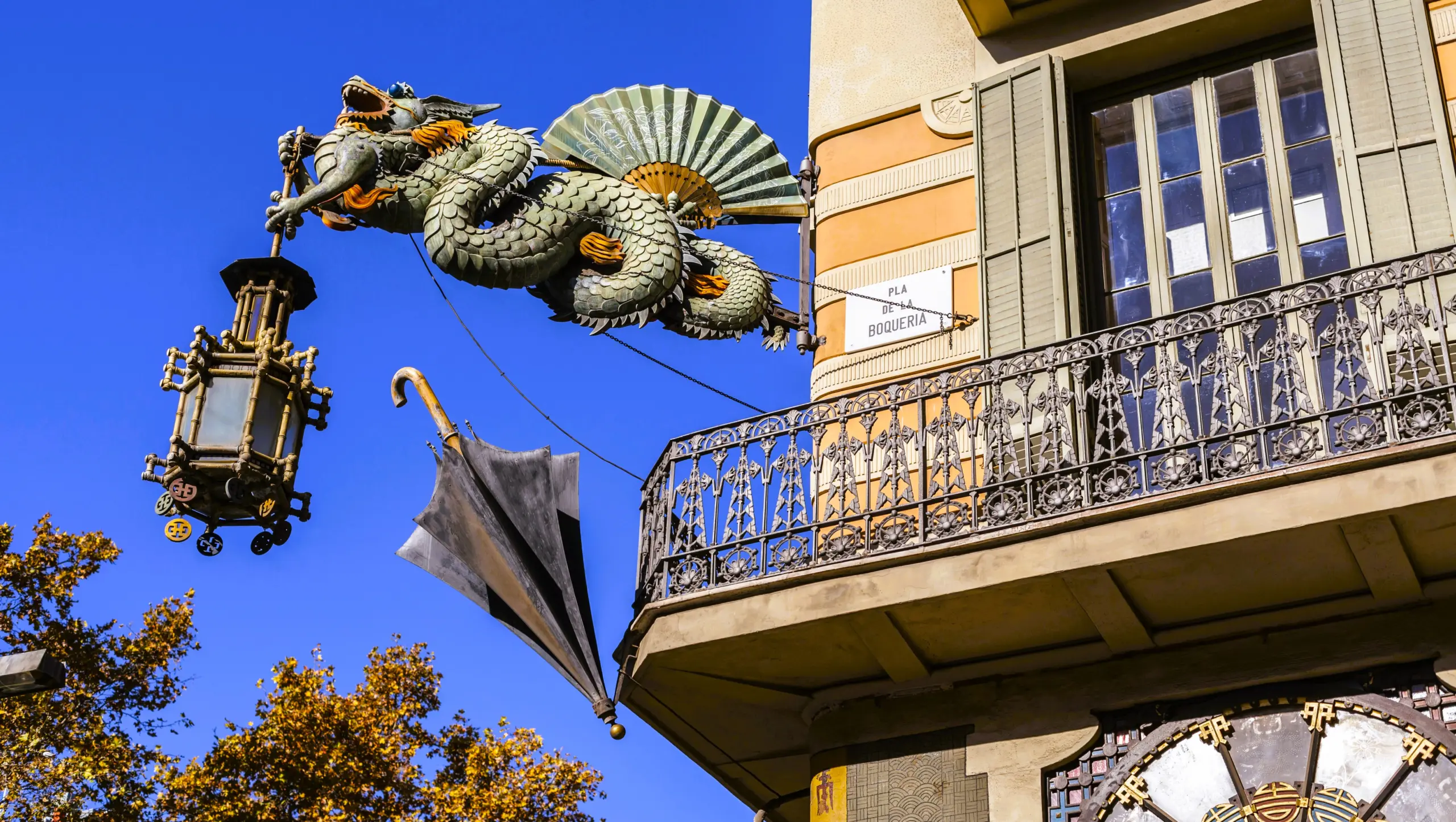
Parc de la Ciutadella: At the heart of this lush park stands the Cascada Monumental, a grand fountain adorned with sculpted dragons and griffins. Designed by Josep Fontserè (with Gaudí’s assistance as a young apprentice), it marks one of the earliest appearances of dragon motifs in modern Barcelona’s public art.
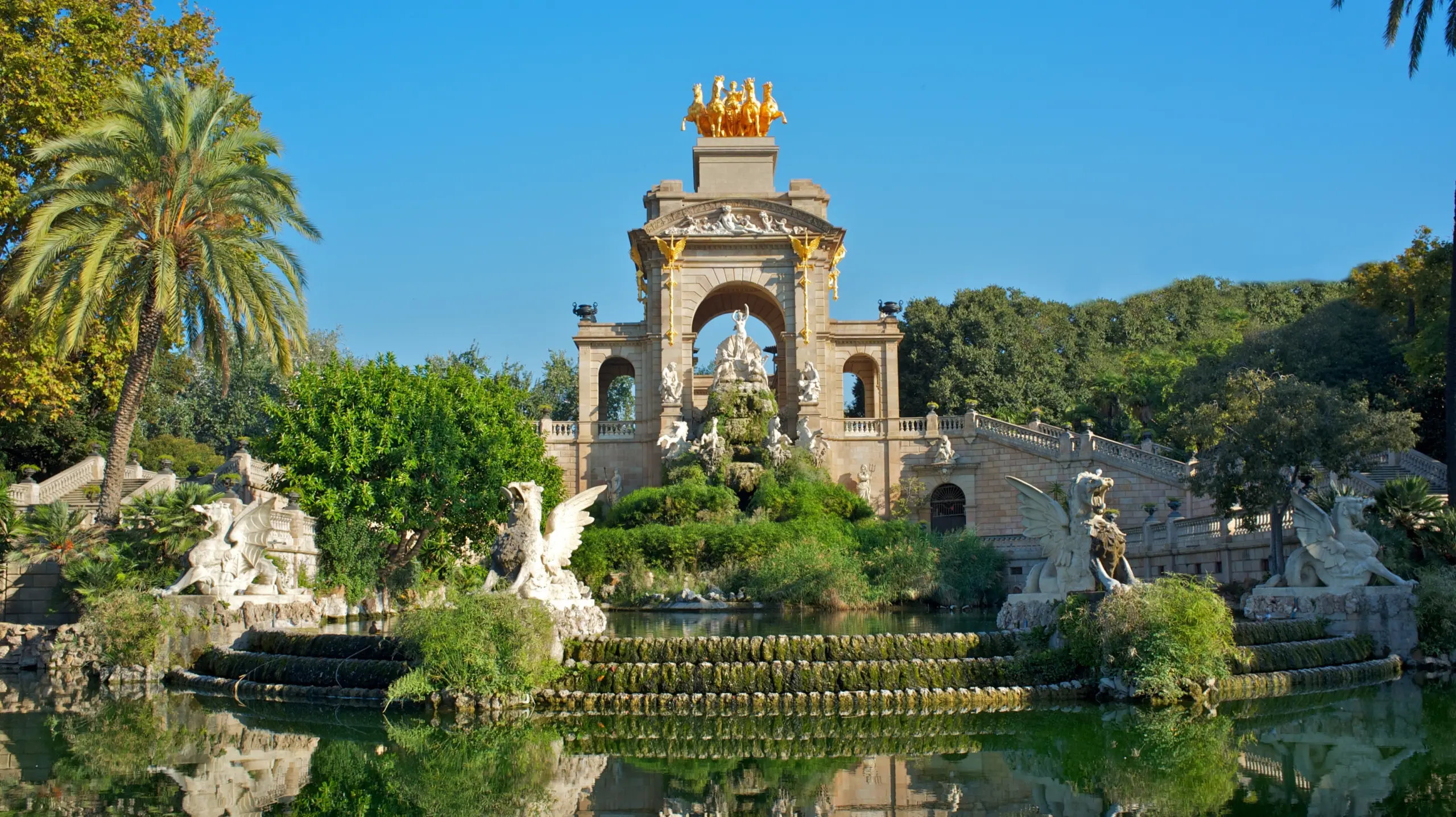
The Meaning of Dragons in Catalan Culture
In Catalonia, dragons are not merely beasts to slay, they’re forces to understand. They embody the duality of chaos and creation, fear and freedom, earth and air. Throughout history, artists and architects have reimagined the dragon as a protector rather than destroyer, a guardian of creativity, courage, and transformation. It mirrors the Catalan spirit itself: bold, imaginative, and unafraid to reinvent tradition. In Gaudí’s hands, the dragon becomes part of nature’s language: alive, colorful, eternal.
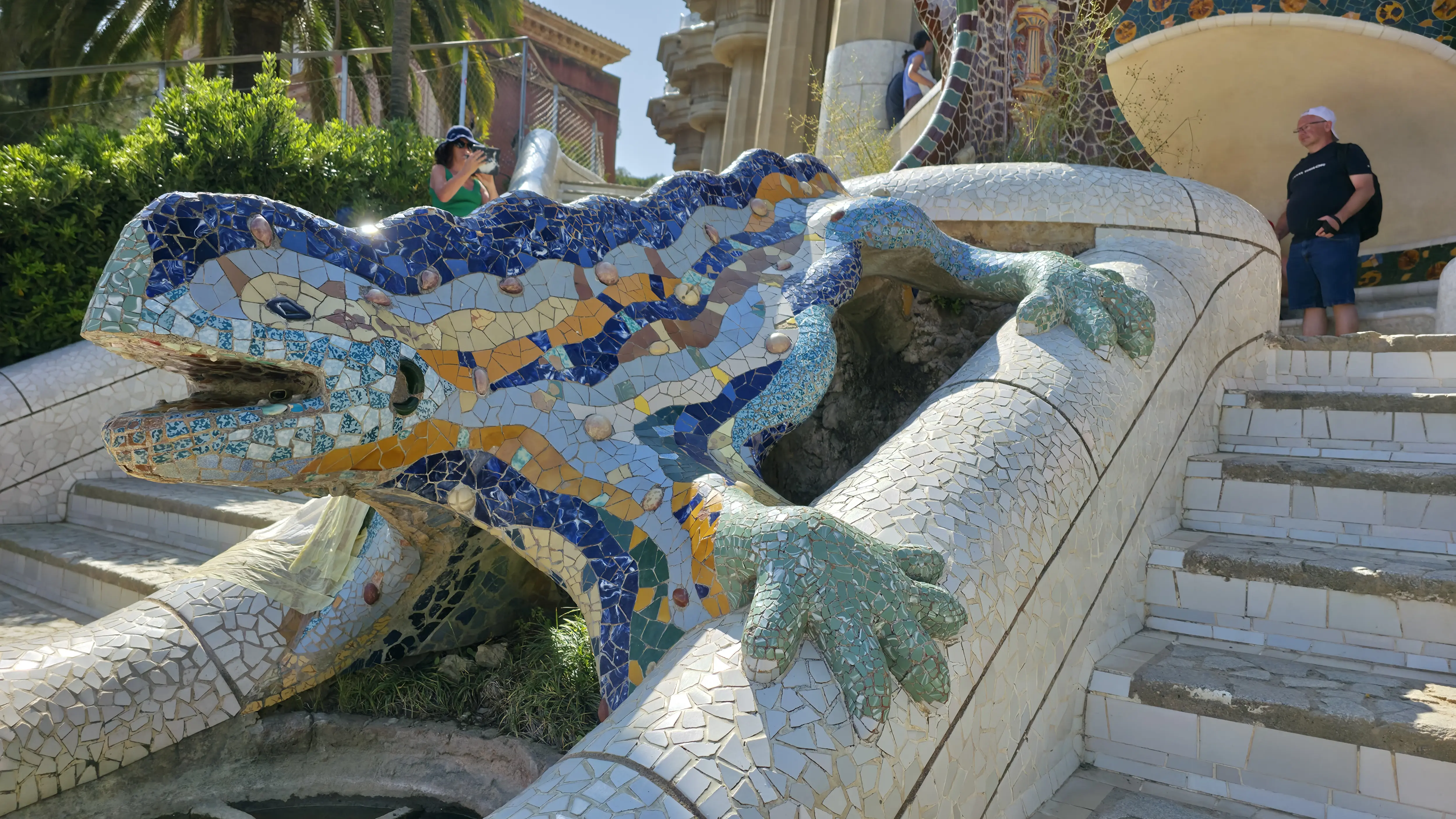
Through My Eyes
As I wandered through Barcelona, I began to spot dragons everywhere – on rooftops, doors, fountains, even café signs. Some fierce, some smiling, some so subtle you might miss them if you weren’t looking. Standing before El Drac in Park Güell, I remembered how its tiles catch the morning sun, each fragment unique, yet together forming harmony. Later, at Casa Batlló, I looked up at the curved rooftop and felt that same pulse of creativity: how this city dares to turn myth into art, history into light.
For me, the dragons of Barcelona aren’t about fear at all. They’re about rebirth, resilience, and imagination, reminding us that what once threatened can become what protects, and that every scar can shimmer if we choose to make it beautiful.
Final Thoughts
Barcelona’s dragons are more than decoration; they’re guardians of imagination. They remind us that art can tame fear, that creativity can transform chaos, and that beauty often hides in the unexpected.
As I left Casa Batlló that evening, the sky glowed rose-gold above the dragon’s spine. I thought of El Drac in Park Güell, still smiling under the sun, and realized that Barcelona’s magic lies in this, a city unafraid to dream, to play, and to keep its dragons close.
Have you spotted a dragon in Barcelona before? Tell me your favorite one in the comments below.
xoxo,
Bubbly🎈

